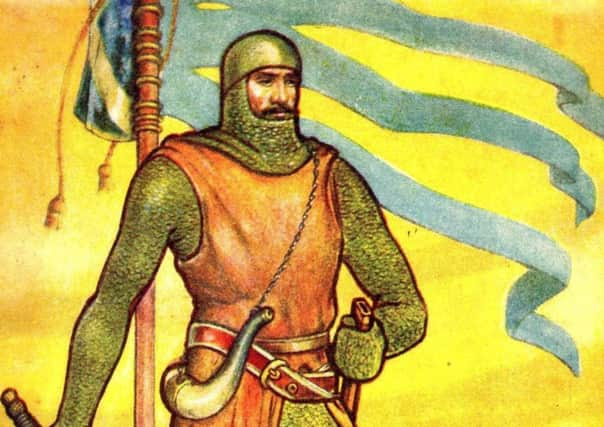The first freedom fighterfor Scotland's cause


It was the Society of William Wallace and friends setting off from the grave of Sir John de Graeme (in the grounds of Trinity Church in the High Street) to march to the cairn in Callendar Park which stands in memory of the men who fell at the first Battle of Falkirk on July 22, 1298.
I have written about that disastrous day in Scotland’s history many times over the years and don’t want to re-tell the familiar story of the huge encounter which took place somewhere to the east of the town – though exactly where has never been discovered.
Advertisement
Hide AdAdvertisement
Hide AdRather, I want to think about the best place to mark the event on occasions such as this.
The cairn in the park is certainly within marching distance of the town and the de Graeme tomb is an obvious and appropriate starting point.
With no battle site identified for certain then the current choice is very sensible.
But there is a place with strong connections to that day in 1298 which has been recognised and honoured for well over two centuries and today is marked by the world’s first ever memorial to William Wallace.
The clue is in the name: Wallacestone.
Advertisement
Hide AdAdvertisement
Hide AdThe ridge which overlooks the Forth Valley commanding views to east and west has long been the stuff of legend where Wallace is said to have stood on the morning of the battle.
From here he could see the massed ranks of English knights and foot soldiers advancing from Linlithgow while away to the east were his own men forming great rings like giant porcupines bristling with huge spears.
According to the story, the great man then set off to join his men while King Edward and many of his noble supporters ascended to the ridge for the same sight-seeing purpose.
While they were there, it being the Feast of Mary Magdalene, the Bishop of Durham, who was a great warrior as well as a churchman, said Mass and distributed communion to the assembled men.
Advertisement
Hide AdAdvertisement
Hide AdThe name Wallacestone has its origin in yet another local legend which tells us that a great flat stone on the ridge marked the actual spot where the hero stood and that at some stage the letters WW were carved by an unknown hand!
This did not save it from the collier who thought he had found a great hearth stone for his cottage and pinched it. However, as his fire crackled in the grate weird bagpipe sounds emerged and the terrified thief smashed the precious stone to smithereens! Great stuff.
There were regular processions of miners to the site in the years after they were freed from serfdom in 1799 and in 1810 they raised the funds necessary to erect the pillar which stands there today proclaiming ‘‘Hic stetit’’ (here stood) and ‘‘Erected to the memory of that celebrated Scottish hero Sir William Wallace’’.
When the Free Colliers were founded in 1863 at Redding to defend the right of miners from the oppressive actions of the greedy coal owners they adopted the name of Wallace and made Wallacestone the focal point of their annual demonstration in early August.
Advertisement
Hide AdAdvertisement
Hide AdA week on Saturday the Colliers, of which I am proud to be an honorary member, will once again climb the hill to Wallacestone as they have done many times before to remember the struggles of their forefathers and to honour the name of William Wallace who stood on the very spot seven centuries ago.